Warming up LED garden lights
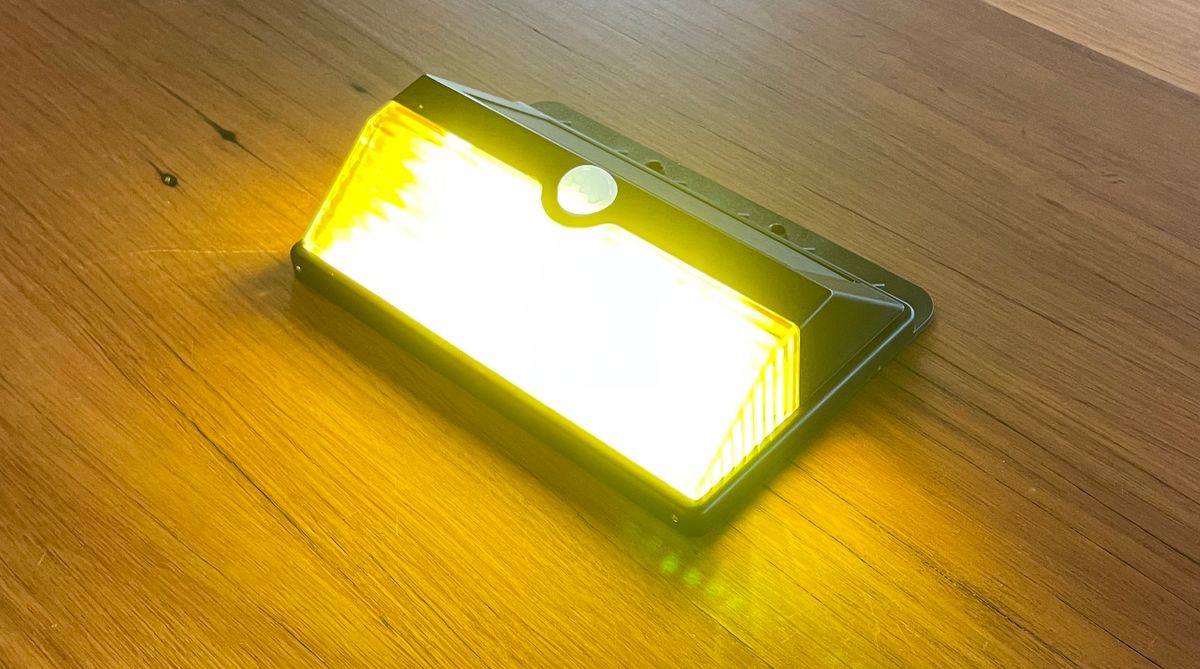
At some point in the last decade Arlec and Click decided to rain down a form of terror upon us all unlike the world had ever seen before. Of course I'm talking about 4000k+ LED garden lights which some experts refer to as "moon-lighting" but really it's just insect attracting (technically, insect confusing) and retina shattering stuff - especially when combined with a high lumen count. Here's the thing - they're only $10! That's $10 for a solar panel, lithium battery, sensor and led strip light in a weatherproof housing - insanity.
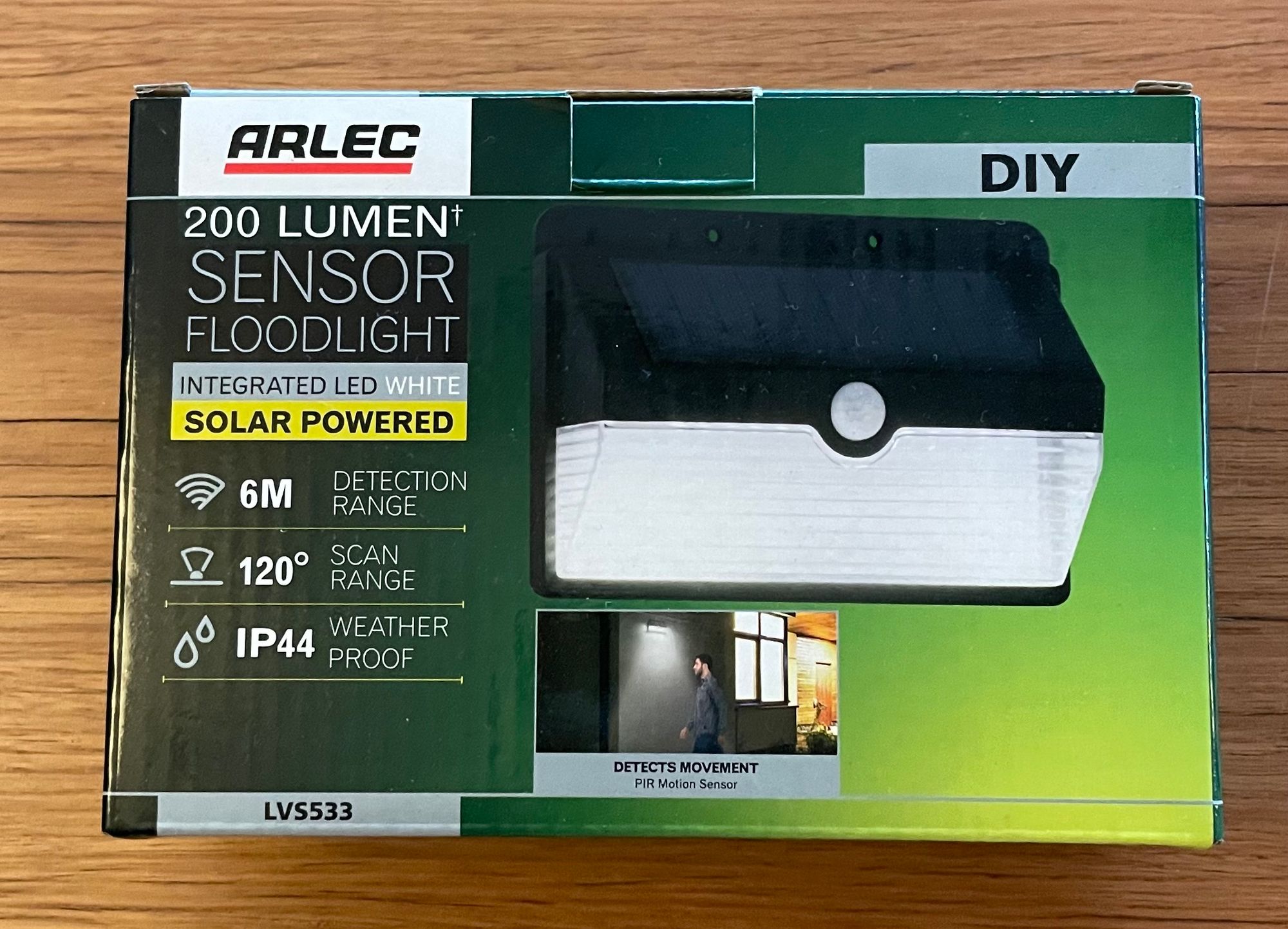
The question was could I replace the prison-tower-floodlight effect with something warmer and more natural? Alright to start with we need...
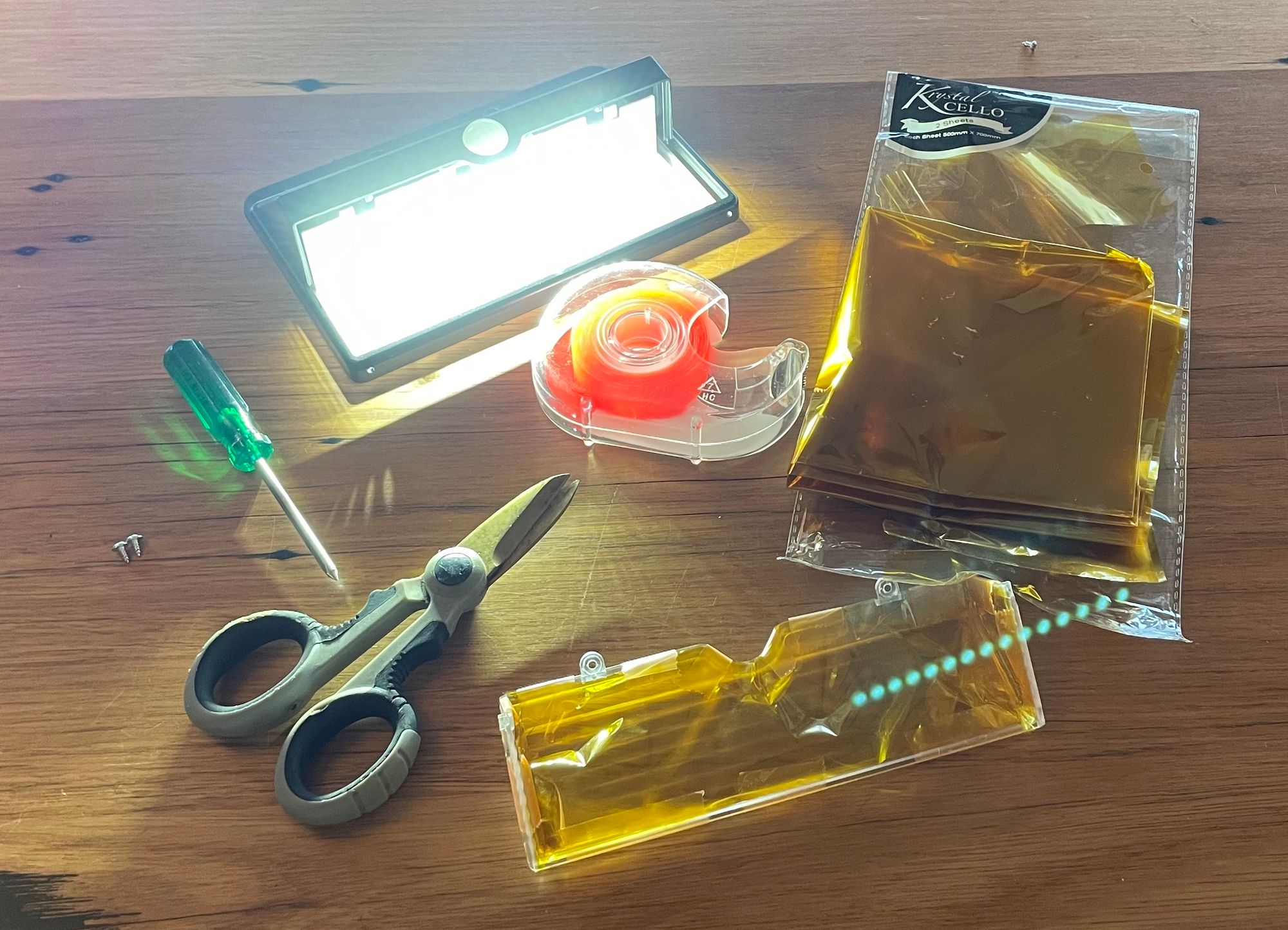
Oh god that light is horrible. Let's try that again...

Better! Yellow cellophane, some scissors, tape and a really small philips head screwdriver. It was actually pretty easy taking apart the unit, 5 screws on the back and then once it's open, there's another 2 screws holding the lens on.
I don't remember the last time I cut cellophane but it's much harder than it looks, especially when you're doing multiple layers. I ended up settling on 2 layers with some overlaps on the side corner bits. Taping was a bit all over the place - definitely not winning any design awards. I ended up getting some help for the second one from a friend - there's only so much cellophane I can deal with in a day.
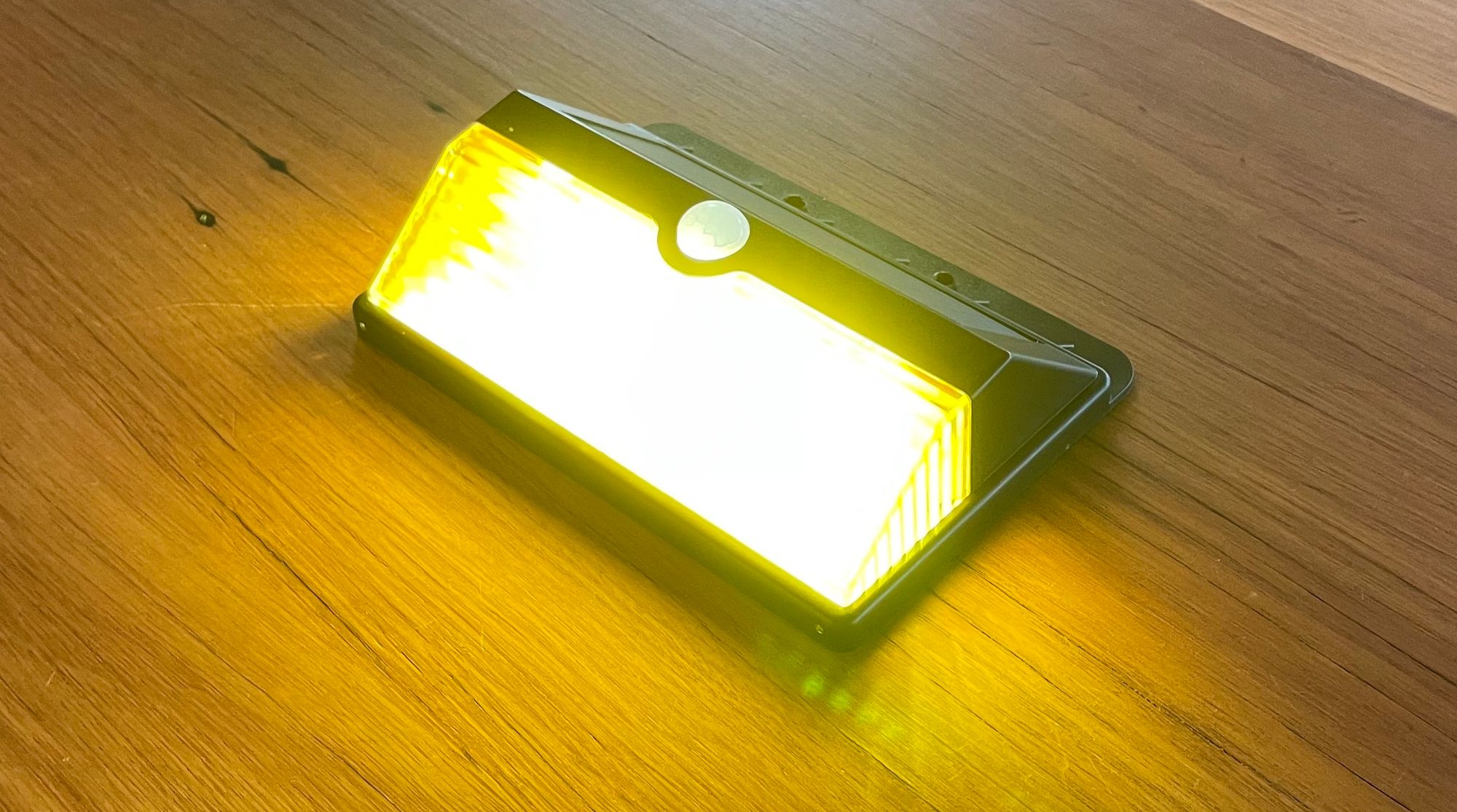
Once the sensor light is lit up, any imperfections in the cellophane melt away and you're left with a beautiful, soothing yellow light. Yellow has the bonus of being invisible to insects so you won't get a face full of bugs when walking past.
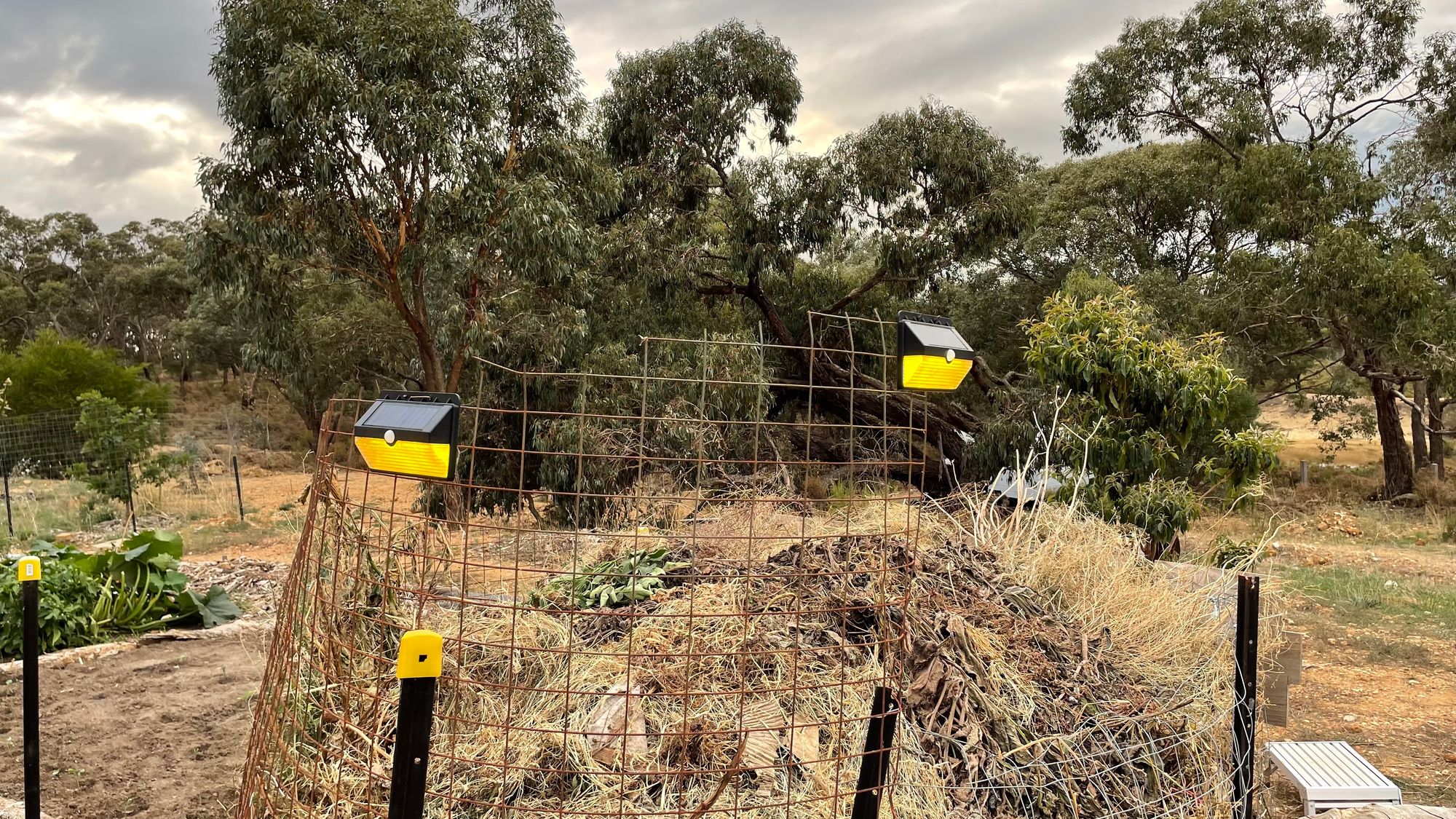
Here they are, in their natural habitat, lit up for demonstration. They're not much to look at during hte day but at night they still put out a heap of light. Warm, beautiful, insect-free light.
At night when there's no motion nearby, this is their standby state...
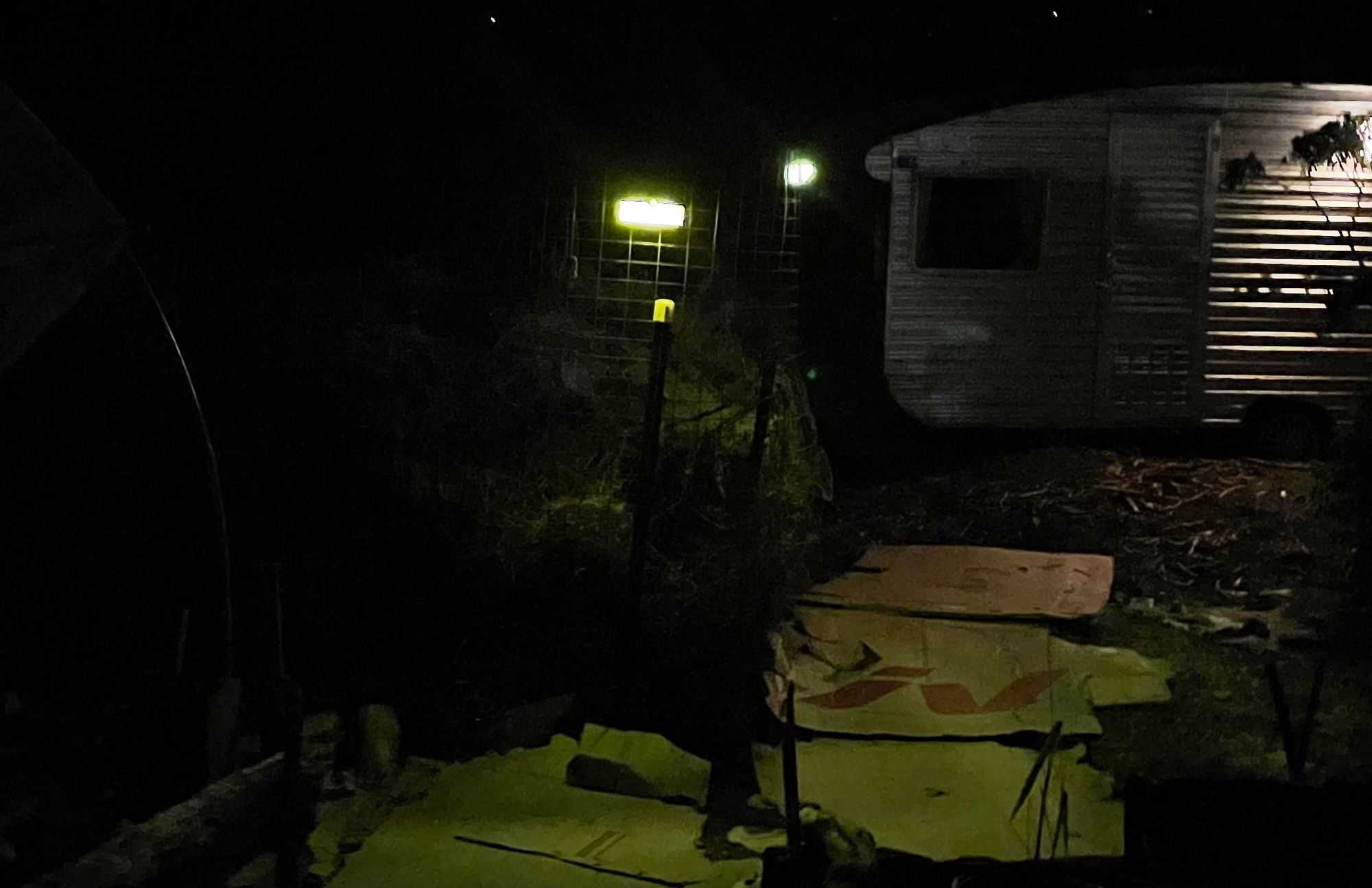
But as soon as you get within 6metres of them, boom...
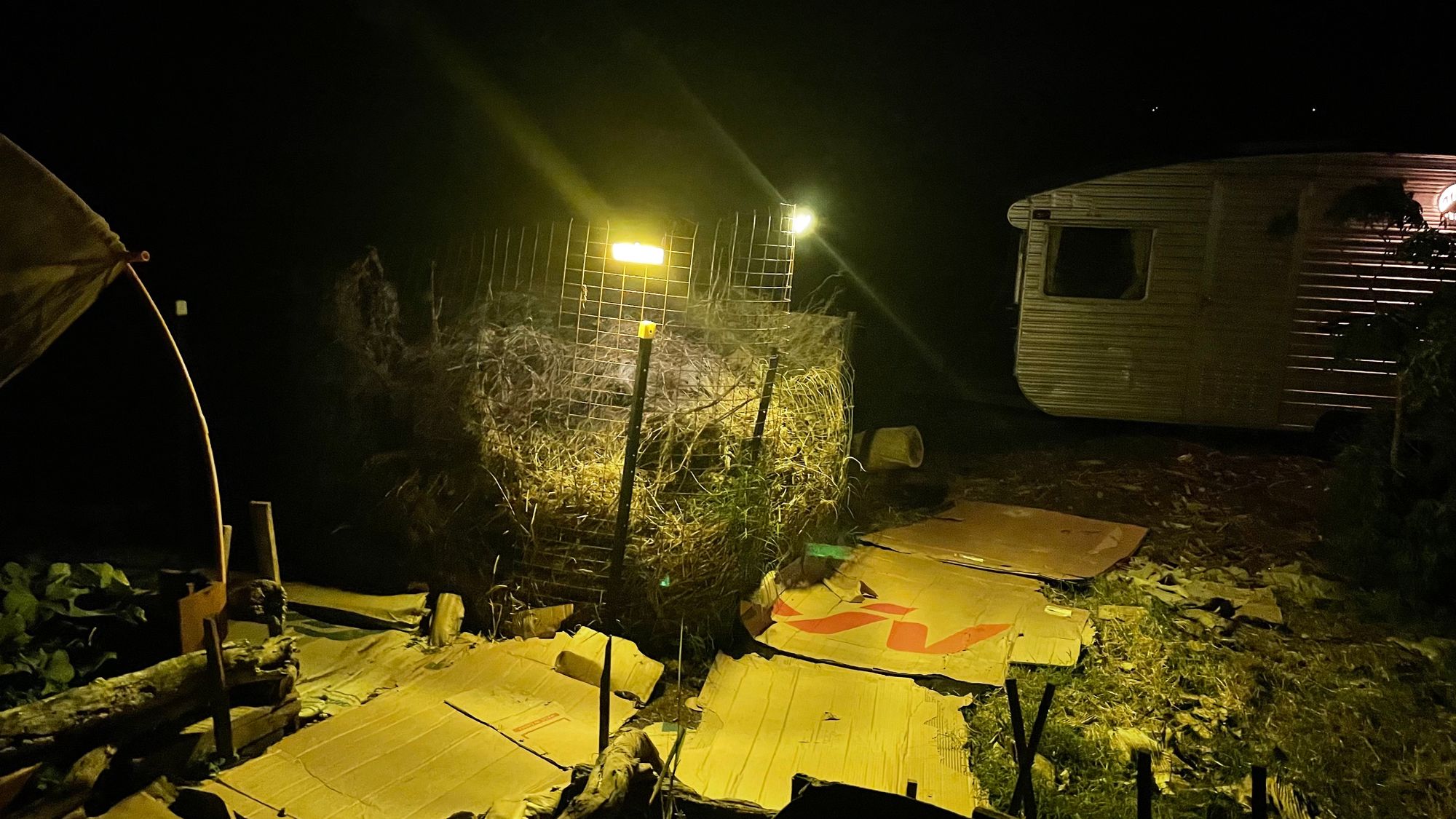
Beautiful.